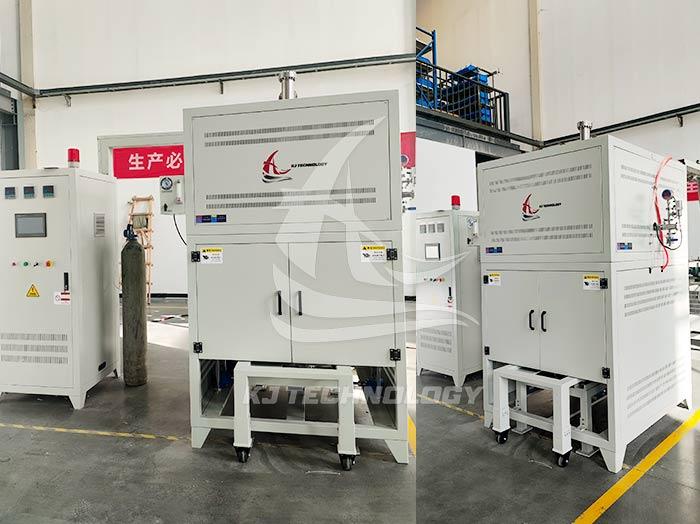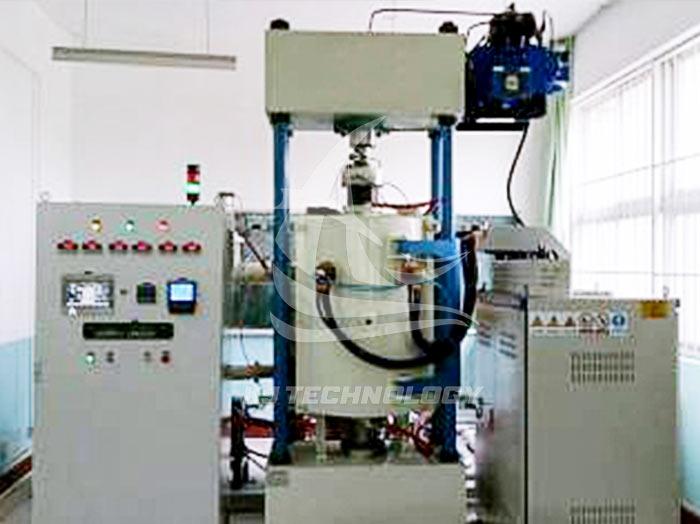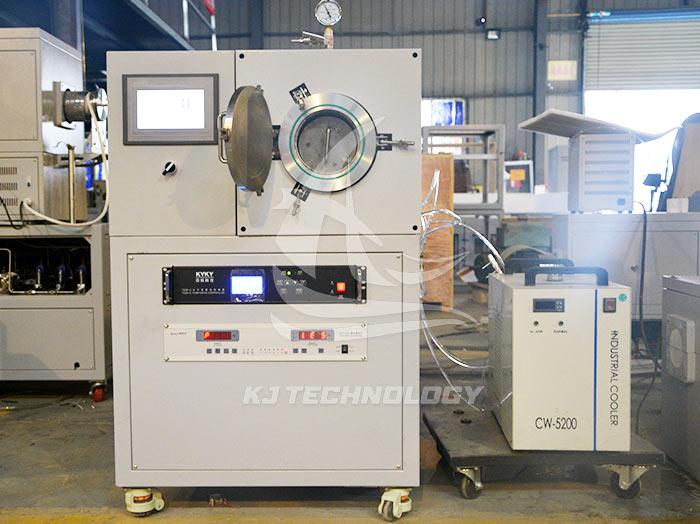What are the temperatures of industrial vacuum heat treatment furnaces?
 05-08-2025 Author: KJ technology
05-08-2025 Author: KJ technology
The temperature range of industrial vacuum heat treatment furnaces is wide, and the specific temperature setting depends on material characteristics, process requirements, and equipment design. The following is a detailed explanation of common temperature ranges and their application scenarios:
1. Common temperature range
Low temperature range (below 600 ℃)
Typical applications: stress relief annealing, aging treatment, metal degassing, etc.
Material examples: Low temperature annealing of aluminum alloy, copper alloy, titanium alloy, stress relief of precision parts.
Characteristics: High temperature uniformity is required to avoid material deformation or oxidation.
Medium temperature range (600 ℃ -1000 ℃)
Typical applications: quenching, tempering, solution treatment, etc.
Material examples: quenching and tempering of tool steel and mold steel, solution treatment of stainless steel.
Characteristics: Accurate control of heating rate and insulation time is required to ensure that material performance meets standards.
High temperature range (1000 ℃ -1300 ℃)
Typical applications: High speed steel quenching, high-temperature alloy heat treatment, ceramic sintering, etc.
Material examples: quenching treatment of high-speed steel cutting tools, solid solution strengthening of nickel based high-temperature alloys.
Characteristics: High vacuum or inert gas protection is required to prevent material oxidation or decarburization.
Ultra high temperature range (above 1300 ℃)
Typical applications: sintering of superhard materials, melting of tungsten/molybdenum metals, preparation of ceramic fibers, etc.
Material examples: sintering of diamond cutting tools, melting and processing of tungsten molybdenum alloys.
Features: Requires special heating elements (such as graphite, tungsten wire) and efficient cooling systems, resulting in high equipment costs.
2. Factors affecting temperature selection
Material characteristics
The phase transition temperature and oxidation sensitivity of different metals determine the heat treatment temperature. For example, the beta phase transition temperature of titanium alloys affects their quenching temperature selection.
Process requirements
Quenching requires rapid heating above the critical temperature, while tempering requires insulation at a lower temperature to eliminate internal stress.
Equipment capacity
The temperature resistance limit of heating elements (resistance wire, graphite, tungsten wire) and the maximum temperature limit of vacuum system (mechanical pump, diffusion pump) pumping capacity.
3. Temperature Control Technology for Industrial Vacuum Heat Treatment Furnace
High precision temperature measurement system
Use thermocouples (S-type, B-type) or infrared thermometers to monitor the temperature inside the furnace in real time, with an error controlled within ± 1 ℃.
intelligent temperature control system
Automated control of segmented heating, insulation, and cooling is achieved through PID controller or PLC programming to ensure process repeatability.
Temperature uniformity optimization
By using multi-layer insulation screens, circulating fans, or rotating workpiece racks, the temperature difference inside the furnace is controlled within ± 5 ℃ to meet the requirements of precision machining.
4. Typical application cases
aerospace field
Nickel based high-temperature alloys (such as Inconel 718) undergo solution treatment at 1100 ℃ to enhance their high-temperature strength and creep resistance.
Automotive manufacturing field
High speed steel cutting tools are quenched at 1220 ℃, combined with cryogenic treatment at -196 ℃, significantly improving hardness and wear resistance.
In the field of electronic materials
Ceramic substrates are sintered at 1600 ℃ and combined with a hydrogen reducing atmosphere to prepare high-purity and high thermal conductivity materials.








